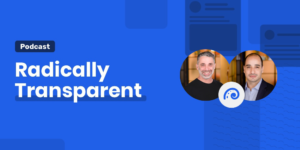Launched in 2012, YourStory’s Book Review section features over 325 titles on creativity, innovation, entrepreneurship, and digital transformation. See also our related columns The Turning Point, Techie Tuesdays, and Storybites.
Frameworks and tips for individual and organisational creativity are well-described in Scott Cochrane’s second book, Your Creative Mind: How to Disrupt Your Thinking, Abandon Your Comfort Zone, and Develop Bold New Strategies.
Scott Cochrane is president of advisory firm The Bold Mind Group. He has extensive experience as a creativity consultant, coach and advisor, with clients such as Accenture, Danone, ING, and Shell.
Here are my key takeaways from this enjoyable and practical 270-page book, summarised in the sections below. See also my reviews of the related books Lateral Thinking Skills, Mix and Match, Social Chemistry, The Art of Noticing, Non-Obvious Trends, The Serendipity Mindset, Experiencing Design, and The Creative Thinking Handbook.
Foundations
Scott defines creativity as the ability to come up with a truly new or original idea. Business innovation is the application of creativity for a profitable outcome.
There are a number of types of innovation: product, service, process, supply/distribution, marketing, business model, and experience. Some innovations can be improvements of already existing products.
Some innovations are triggered by sudden external events, others arise from a series of continuous experiments and pivots. Successful entrepreneurs also have a desire to do something on their own, rather than stick to a routine corporate job.
Scott cites the research of Bruce Nussbaum which identifies five core competencies of creative intelligence: knowledge mining, framing, playing, making, and pivoting.
Another cited framework is Stephen Covey’s model of creative flow. It has steps such as first creation (in the mind), action, second creation (development), positive references, empowering beliefs, and greater potential.
Rather than the fixed mindset, having a growth mindset helps fulfil one’s creative potential, according to Carol Dweck.
Barriers
Scott identifies barriers to creativity such as inflexibility, control, fear, and egotism. This includes fear of failure, fear of rejection, fear of uncertainty, and fear of the future.
Companies that were once successful are sometimes unable to foresee or react to market trends, or unable to create new trends themselves.
The “tyranny of experience” can lead to cognitive rigidity and resistance to change. While forming habits is useful for survival, there are times when old habits need to be abandoned, Scott advises.
As compared to the positive upward spiral of creativity, the downward spiral is fueled by disappointment, retreat, and settling for inferior ideas. In organisations, there will be tension between the need for routine and the desire for spontaneity and flexibility, he observes.
Constraints
Creativity can actually flourish under conditions of constraints, which Patricia Stokes classifies into four types: domain, cognitive, talent, and variability. “If necessity is the mother of invention, comfort is its enemy,” she describes.
“Deadlines make you creative,” says musician Jack White. In the business world, some companies also set self-imposed constraints of budget and timeline to drive creative efforts.
Mental agility
“Neuroplasticity refers to our brain’s ability to change,” Scott describes. This can be leveraged to keep our brains productive and creative.
A continual sense of hope, optimism and belief help in this regard. Athletes offer useful lessons here in the ability to train not just the body, but the mind as well.
Visualisation should focus on positive but realistic outcomes, Scott advises. Training or practising with peers or others at a higher level of proficiency also help.
Curious minds lead to creative pursuits, and creative behaviours sustain the momentum. Serial innovators question assumptions but have a practical orientation.
Creative attitudes are also driven by our self-constructed “life stories,” according to Dan McAdams. Such stories are shaped by our sense of identity, origin and journey, which in turn direct our sense of purpose.
Structured interactions and introspection can reveal key roles in such stories, Scott shows. This could include ‘trailblazer’ or shepherd,’ which in turn lead to satisfaction with different kinds of creative functions. Vision boards and periodic checks on motivation help here.
Focus
Creativity involves understanding and toggling between interacting cognitive processes, which include conscious and unconscious activities. Examples include System 1 (instinctual) and System 2 (slow, controlled) thinking, as explained by Daniel Kahneman.
Creative people strike a balance between focus and distractions. Such distractions can be external or internal, while focus can be on the inner, outer or other spaces, according to Daniel Goleman.
Unproductive habits should be gradually replaced so that new habits become automatic. Scott recommends daily focusing rituals as well (such as meditation or prayer), and organisational methods (jotting down ideas, keeping task lists).
Companies too need to find a balance between short term outcomes and long-term gains, Scott advises. Too much of a focus on productivity or cost-cutting will drive away innovative minds.
Learning from failure
Though much has been written about learning from failure, no one looks forward to failing. “Failure is rarely a pleasant experience,” Scott observes.
“Just as the artist’s clothes are splattered with paint, the life of the bold mind is inevitably littered with failure,” he adds.
With a fixed mindset, failure is seen as a threat to identity. But with a growth mindset, failure is cast as an opportunity for learning and growth, Scott explains.
Unblocking creativity
At an individual level, Scott advises purging negative and fearful thoughts, and cultivating creative habits via hobbies, outdoor activities, and exposure to creative communities. Healthy eating and sleeping also help.
Meditation and a higher sense of purpose can unlock create energies as well. Scott recommends arts-based activities like improv theatre, which can improve team dynamics, help embrace uncertainty, and create comfort with ideas that are not yet fully developed.
Organisational creativity
At the organisational level, some approaches to brainstorming have led merely to a large quantity of mediocre ideas instead of a few brilliant ones. This is due to dominance by extroverts or pandering to authority figures, thus leading to “unintentional groupthink.”
Instead, Scott recommends beginning with creative games based on associational thinking. This makes everyone start at the same level, and forces generation of new connections.
Successful companies listen to market signals, track the competition, and carry out many diverse experiments. They encourage collaboration, keep reinventing themselves, and embed opportunities for creativity in work; they also give ideas plenty of time to germinate.
Leaders of such firms do not stigmatise failure. They treat failure as a source of growth and learning, and even create a mandate to “fail quickly.” Both failure and success as treated as data points for research and experimentation.
Such experiment results should be recorded and evaluated with appropriate metrics so that pivots can be conducted where necessary. The right business partnerships should also be cultivated.
Other creativity methods practised by Scott include the Time Machine Experience. It involves visualisation of a future state of the business, defining success, and working backwards from there. Techniques like storytelling, artistic renderings and even theatrical renderings can be used here.
The road ahead
Scott also identifies some of the subsequent steps in the innovation journey, which can include legal protection for ideas via patents, trademarks, and copyrights. This can also extend to rights to screenplays and translations in the case of publications.
Looking to the future, he identifies key opportunities – and challenges – for creative professionals. This involves creating and adapting to emerging technologies in connectivity, healthcare, information processing, and automation.
Surveys of a range of companies reveal a “global creativity gap.” Ultimately, creativity will help make work meaningful, resolve emerging ethical dilemmas of the future, and create a better world for us all, Scott signs off.
YourStory has also published the pocketbook ‘Proverbs and Quotes for Entrepreneurs: A World of Inspiration for Startups’ as a creative and motivational guide for innovators (downloadable as apps here: Apple, Android).










